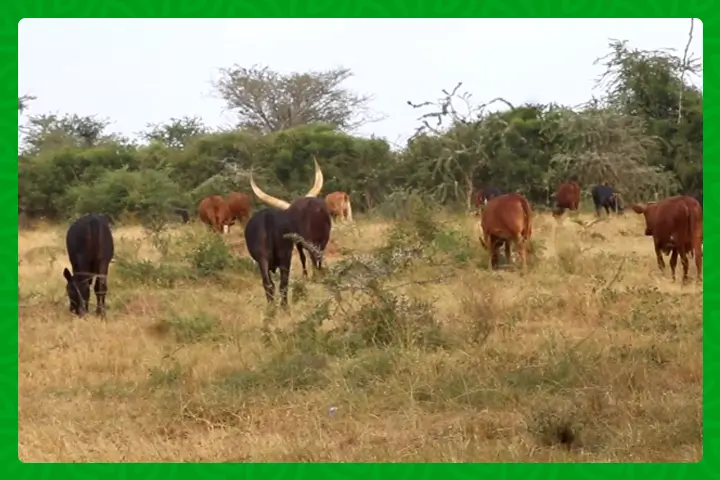
In the serene landscapes of Kayonza district, a silent menace is looming, casting a shadow of concern over the lives and livelihoods of its resilient livestock farmers. The alarm bells have rung, and it’s a buzzing culprit that’s causing this distress – the notorious tsetse fly. Emerging from the depths of Akagera National Park, these tiny terrors are rapidly becoming a significant threat to the animals that form the backbone of this community.
Nagana Strikes Fear into the Hearts of Livestock Keepers
As we delve into this unfolding crisis, stories of despair and resilience emerge. Livestock farmers in Kayonza district, who are the unsung heroes of our rural landscapes, share their plight. They reveal that these insidious tsetse flies are harbingers of Nagana, a debilitating disease that spells doom for their precious livestock.
Picture this: James Ruzindana, a dedicated cattle keeper, has witnessed the devastating effects firsthand. Since the ominous year of 2022, he has bid farewell to eight of his beloved cows, victims of the relentless Nagana transmission. It’s a heart-wrenching tale of extreme fatigue, aching muscles and joints, loss of appetite, and unquenchable thirst. In his relentless battle to save his livestock, James has already expended over Rwf 250,000 on treatment. His story resonates with countless others in the region facing the same grim reality.
The Central Role of Cattle in Kayonza’s Livelihood
Cattle rearing is more than just an occupation in Kayonza; it’s the lifeblood of the community. Ministry of Agriculture data reveals that the Eastern Province is home to over 10,000 farmlands, with the majority situated in the proximity of Akagera National Park. The cattle here are not merely livestock; they represent sustenance, commerce, and dreams.
Alphonse Zirimwabagabo, another cattle keeper from Kayonza, shares his anguish. He laments that farmers are now compelled to opt for less susceptible cattle breeds, a compromise that comes at the cost of lower productivity. Milk output has dwindled, and the repercussions ripple through the community. Alphonse calls out for support, not as a handout but as tools to combat the relentless tsetse flies. His plea underscores the importance of decentralized distribution through sector veterinary officers.
Light at the End of the Tunnel: Combating the Tsetse Fly Menace
In the face of this mounting crisis, there is hope. Dr. Solange Uwituze, Deputy Director General at RAB in charge of Animal and Resource Development, offers a glimmer of optimism. She proposes an array of control measures, starting with clearing the vegetation around grazing areas. Her prescription includes the use of fly control insecticide-treated traps and fences, readily available at the district level, each trap costing Rwf 1,000, thanks to government subsidies.
Efforts within Akagera National Park have yielded progress. Over 1,000 fly control traps now line densely vegetated roads, stretching an impressive 300 kilometers since 2013. Fiston Ishimwe, the guardian of Park and Community Relations at Akagera National Park, attests to the positive impact of this initiative. Tsetse fly-related concerns among visitors have dwindled, and visitor numbers have surged to 49,000 in 2019.
Ishimwe shines a light on the importance of controlled bush burning within the park, a practice that has contributed to tsetse fly reduction. He urges livestock farmers in the vicinity to follow suit, clearing their farms of potential tsetse fly hiding places.
A Beacon of Progress: Rwanda’s Fight Against Sleeping Sickness
As we wrap up our journey through this tale of adversity and determination, it’s crucial to highlight a significant achievement. Rwanda, in April 2022, received validation from the World Health Organization (WHO) confirming the elimination of sleeping sickness as a public health concern. This milestone is not only a testament to Rwanda’s commitment to health but also a beacon of hope for Africa’s socio-economic development, shedding light on the estimated annual losses of US$ 5 billion that the disease had inflicted.
The battle against the tsetse fly continues, but the spirit of Kayonza’s livestock keepers remains unbroken. It’s a story of resilience, community, and the unwavering determination to protect what matters most. As we look ahead, the tsetse fly menace may still cast its shadow, but it will never dim the spirit of these indomitable farmers.
Stay updated with the latest farming tips and agriculture industry news from Africa by subscribing to our newsletter. Don’t miss out on valuable insights and updates. Follow us on Twitter, LinkedIn, and Facebook to join our farming community and stay connected with us.



















